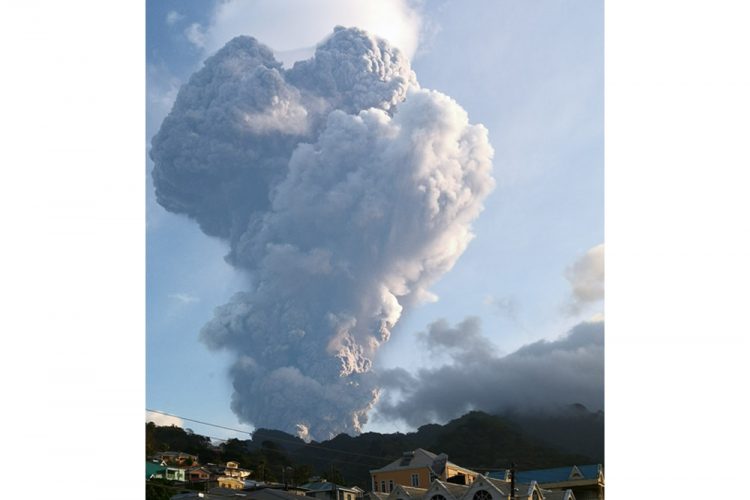La Soufriere brings in 42nd anniversary of April 13, 1979 eruption with classic explosion

by Katherine Renton
La Soufrière brought in her 42nd anniversary since erupting on April 13, 1979, with a classic vulcanian explosion this morning, April 13, 2021.
It has been five days since the volcano has been shooting its gas-rich magma out of the crater, sometimes in towering ash columns, or pyroclastic flows down its slopes.
The interspersed tremors accompanied by explosions or venting, have been changing pattern over the days; but last night, the volcano had a relatively quiet time.
What appears to be happening now that Soufrière has blasted away the heavy domes at the summit and expended a lot of energy, is that a new cap or dome may be forming.
However, the scientists monitoring the volcano had suspected that the magma still had enough energy/gas inside of it, that the pressure would build up and La Soufriere would remove what was holding it back.
Volcanologist Professor Richard Robertson from the University of the West Indies (UWI)-Seismic Research Centre (SRC), leading a team of scientists on the ground, confirmed that the volcano did so, and exploded at approximately 6:30 am this morning.
“…The explosion that we had this morning wasn’t as energetic as the one that we had in the beginning, telling us again that it didn’t have, even though it broke the cap, it didn’t have as much energy as when it started out…” he explained.
“…So the amount of gas-rich magma that you have there … that is at the surface,” he informed, “…is probably being used up.”
If it continues to follow the same pattern it’s doing, the scientists expect to see some indication that it’s trying to grow a dome or form a cap.
“…Now whether or not it builds up enough pressure and does what it did this morning, which is remove it and have an explosion, that’s possible,” Robertson said, or it’s possible that the cap/dome becomes thick enough to stop it, and the volcano doesn’t have the energy to break through.
“…We wouldn’t be surprised in the coming days that instead of having these very vigorous, really high plumes with fine ash being produced, what we would tend to have more of are these discreet explosions like we had this morning which for volcanologists, we would call it a classic vulcanian explosion where you have a punching of material up into the air,” the volcanologist revealed.
In time, they hope there will be a period when they’re fairly certain the volcano won’t explode, and it would be relatively safe to “get the stations back up so that in case we get into a vigorous period again and we lose stations, we will have enough eyes in the mountain.”
Nevertheless, Robertson stressed that the volcano may appear to others over the next weeks or hours to be “quieter” but “It’s still a pretty dangerous volcano.”
It can still explode, and do serious harms to the areas in its close reach. The size of the explosions will depend on the energy/amount of gas in the magma wanting to come out.
“So I would suggest to people don’t let down your guard, keep your guard up, don’t do anything stupid and let’s remain safe and keep the record that we have of nobody being killed from this eruption,” Robertson said.









